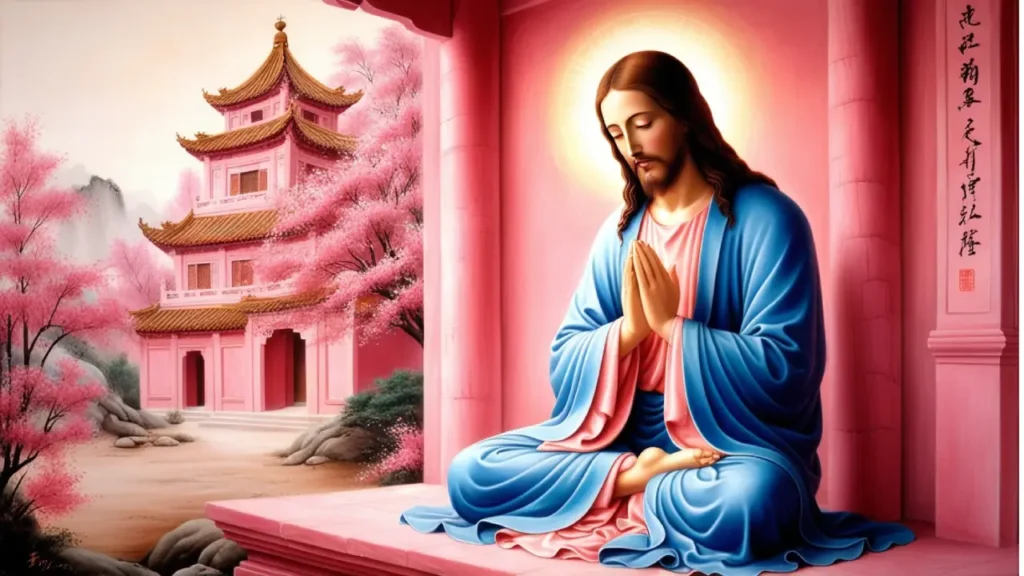Who exactly is Jesus Christ? The question has been asked and answered numerous times over the centuries. But the questioners were wrong, as were those who answered it, because the question, like the answer, was based on prejudice. They weren’t fundamentally different; their source was the same.
The question was asked by those who were suspicious of Jesus’ Godhood, and those who were not ready to believe in Jesus’ manhood answered the question. The Jews were ready to accept him as a man. And the Christians were ready to accept him as God. The Jews were rejecting half of him—Christ. And the Christians were denying the other half of the equation—Jesus.
Christians do not want to see him as Jesus, the son of man—made of flesh, blood, and bones, like the rest of us. And the Jews refused to accept him as God, as divine—made of pure consciousness rather than flesh, blood, and bones.
Have you noticed? Christianity has no knowledge of where Jesus was for thirty years—with the exception of two earlier incidents, when he was born and once when he was seven years old. Only the three years of his ministry is known. The remaining period is still unknown. As per the Bible, when Jesus was thirty, he suddenly appeared in Jerusalem. Then he was crucified, and there is the story of his resurrection. But again, where does he disappear after he was resurrected? Christianity has nothing to say about it. Where did he go? Where is his body?
In his book, Miguel Serrano writes, “Nobody knows what he did or where he lived until he was thirty, the year he began preaching.” However, there are many traditions in India about it: there are folk stories in Kashmir indicating that Jesus was meditating in monasteries here in India and China during all the years that are unaccounted for. Also, the legend has it that he was in Kashir, the original name of Kashmir.

Notovich, a traveler, once published a book in which he recounted everything he had learned about Jesus’ visit to Ladakh and other eastern countries. There are various volumes of Buddhist scriptures and literature wherein you can find extensive mention of Jesus, his teaching, and his visit to Ladakh.
It is said that Jesus traveled from Ladakh to Pahalgam in Kashmir via lofty mountain passes and glaciers. He lived as a shepherd there for a long time, tending his flocks. It is said that it was here that Jesus discovered some traces of Israel’s lost tribes.
Since Jesus lived there, the village was renamed Pahalgam, which means “shepherds’ village.” Later, on his way to Srinagar, Jesus rested and preached at Ishkuman/Ishmuqam—Jesus’ resting place—and this village was named after him as well. When he was thirty, he suddenly appeared in Jerusalem, and the crucifixion and the story of the Last Supper followed.
Christianity is based on the resurrection miracle; it was prophesied that the coming Christ would be crucified and then resurrected. It had to be true that Jesus was resurrected. If this were not the case, the Jews would not believe he was a prophet.
Nothing in Christianity says anything about where he went after the resurrection, and nothing has been recorded. However, legends in India claim that he returned to Kashmir and lived there until he was 122 years old when he died. And the town, the precise location of this occurrence, is Rozabal, as per legends. According to an eclectic mix of New Age Christians, unorthodox Muslims, and Da Vinci Code fans, the grave contains the mortal remains of a candidate who is India’s most important visitor of all time.
There is speculation about Jesus’ unmentioned missing years, which occurred between the ages of 12 and 30, which are not mentioned in the gospels. Some claim he was in India and China practicing spirituality. These aren’t ideas that have completely vanished. Professional historians usually laugh when you mention Jesus living in Kashmir, but his tomb is now firmly on the tourist trail, and a growing number of visitors believe he was buried in the Rozabal shrine.
The famous French historian, Bernier, who visited India during the reign of Aurangzeb, wrote: “On entering the kingdom after crossing the Pir Panjal Pass, the inhabitants of the frontier villages struck me as resembling the Jews.” Kashmiris do have a Jewish appearance—in their faces, in their expressions. Wherever you go in Kashmir, you have the impression that you are in a Jewish country. It is believed that Jesus came to Kashmir because it was a Jewish land in India, with a Jewish tribe living there. There are many stories about Jesus in Kashmir, but you have to go there to find them.
In India, it is assumed that when Jesus was crucified, he must have engaged in some deep yogic practice, because there is no possibility of resurrection if the body truly dies. There are stories that the ‘crucifixion’ completely changed Jesus’ mind. From then on, he lived in India in complete silence for seventy years—unknown and hidden. He was neither a prophet nor a minister nor a preacher. As a result, little could be known about him.
Much is lacking in Christianity. Even when it comes to Jesus, it falls short. His entire life is unknown, including what he practiced and how he meditated. The Christian apostles who recorded what he said were uneducated; they didn’t know much. One of them was a fisherman and the other was a carpenter. The twelve apostles were all in the dark.
The apostles had no idea what Jesus was up to when he went to the hills and remained silent for forty days. They only recorded that it occurred and that when he returned, he began preaching. But what exactly was he doing there? Nothing is known—absolutely nothing.
Whatsoever, it is wise to notice that after his period of silence, he became more and more involved in something which looked more social and political than religious. These are inherent problems, you see – they happen and you have no control over them. If you ask me, Jesus is exactly equivalent to Buddha, Mahavira, or Krishna.
Jesus says, “Is it not written in your law, I said, Ye are gods?” in John 10:34.
If you like this post, share it with someone who need to hear this and follow this space to stay sharp!



